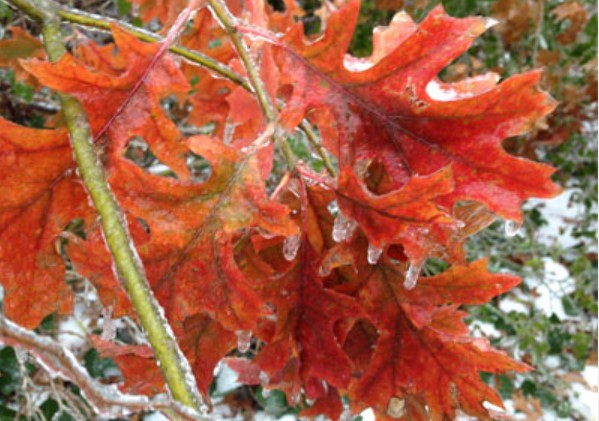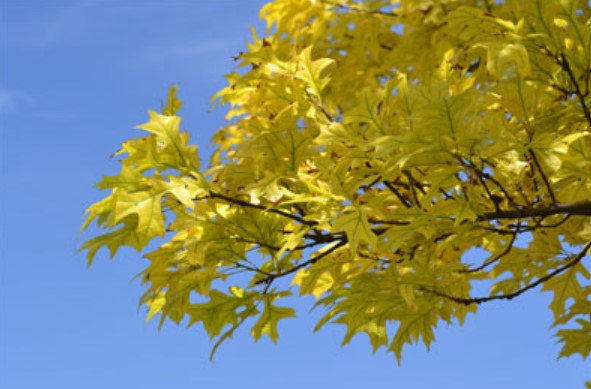Tree Species Profiles: Top Rated Shade Trees, Shumard Red Oak (Quercus shumardii)


Published July 31, 2015, By STEVE HOUSER
The typical Shumard Red Oak, Quercus shumardii, is an excellent tree that is well worth considering for any landscape setting that allows room for a large growing shade tree and has the right soil conditions. The best term to describe the overall look of the tree would be “stately” with an air of distinction due to its size and stunning fall color when the Texas weather allows.
The Shumard Red Oak is a moderately fast growing tree that can attain heights of over 100 feet with broad crown spread reaching 70 feet or more. They typically have a single trunk with well-spaced limbs that greatly please the hearts of many tree climbers. Some trees contain a thick mass of limbs for a tree climber to navigate which can present many challenges and frustrations. Certain tree species can be climber-friendly or downright mean spirited—especially those with thorns! For example, Shumard Red Oak welcomes a climber and often offers an excellent swing from limb to limb. But, a thorny Honey Locust, Gleditsia triacanthos, can be full of weapon-grade spurs that can expand a climber’s vocabulary of flowery expletives!

Dependable fall colors of red, yellow, and all the in-between shades make Shumard Red Oaks a favorite tree selection for Texas gardens.
Fall color can vary from red to yellow or just brown, depending on the weather and other factors. The fall color is also dependent on the genetics of the individual tree. Shumard Red Oak has a propensity to cross-pollinate with other trees in the Black Oak Group such as Texas Red Oak, Quercus texana buckleyi, which is native to north and central Texas. Shumard Red Oak is native to the eastern third of Texas, except in the far south. The late Benny Simpson notes in a Field Guide to Texas Trees, “One of the puzzling oak complexes in Texas is the Shumard Red Oak–Texas Red Oak–Chisos Red Oak group. There is no doubt that they are extremely closely related, and much confusion exists in herbaria and in the field as to the correct identity of these oaks. Along the line from Dallas to Austin will be a great hybrid swarm of Quercus shumardii x Quercus texana. Pure Shumard Red Oak probably does not exist on the Edwards Plateau. Pure stands of Shumard Red Oak occur to the east of the hybrid swarm and Texas Red Oak occurs to the west.

To avoid purchasing a Shumard Red Oak cross-pollinated with other oaks, like this cross with pin oak, buy trees from a dependable local nursery source.
Cross-pollinated trees can express some of the characteristics of both parents, making a positive species identification difficult. Although Shumard Red Oak transplants well, be sure you specify to your nurseryman that the Red Oak you buy must be a PURE Shumard Red Oak—not a cross-pollinated version. Anything less than a 100 percent Shumard Red Oak will not meet your expectations.

Plentiful acorns from Shumard Red Oaks are a favorite of deer, turkeys, and pesky squirrels.
Shumard Red Oaks can live up to 200 years and prefer moist soils along creeks, rivers, and bodies of water. They are moderate in drought tolerance with the Texas Red Oak out-rating the Shumard in this category. Both of these closely related oaks are susceptible to the deadly Oak Wilt disease, which is a big drawback in areas of confirmed infection.
Editors Note: Shumard Red Oaks are one of the five most common shade trees found in North Central Texas landscapes. If you are considering adding a Shumard Red Oak to your garden and need more information on the finer points of growing and caring for this shade tree, or need some direction with the care of existing Red Oaks contact your Arborilogical Services certified arborist.
To continue reading the Top Rated Trees article series, please click here.

